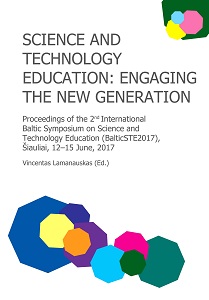WRITING VERSUS TYPING IN THE BIOLOGY CLASSROOM: A CASE STUDY IN SLOVENIA
WRITING VERSUS TYPING IN THE BIOLOGY CLASSROOM: A CASE STUDY IN SLOVENIA
Author(s): Metka Kordigel Aberšek
Subject(s): Education, School education
Published by: Scientia Socialis, UAB
Keywords: writing curriculum; visuographic representation; quantitative research;
Summary/Abstract: The act of writing is a complex cognitive process, relying on perceptual sensorimotor combinations (Mangen et. all, 2015). Writing is the process of externalizing the content of our thinking, what we know, what we think, what we feel … Writing always involves the skilful handling of mechanical/technical devices, and necessarily results in a visuographic representation: some kind of readable text in a form of letters or symbols (Mangen, Velay, 2010). The neuroscientific research points out writing is a process that requires the integration of visual, proprioceptive (haptics/kinaesthetic) and tactile information in order to be accomplished (Fogassi, Gallese, 2004). The acquisition of writing skills of previous generations involved a perceptual component, learning the shape of the letter, and a graphomotor component, learning the trajectory producing the letters shape (van Gallen, 1991) – the process, that is probably going to change with the Generation Z.
- Page Range: 65-68
- Page Count: 4
- Publication Year: 2017
- Language: English
- Content File-PDF

